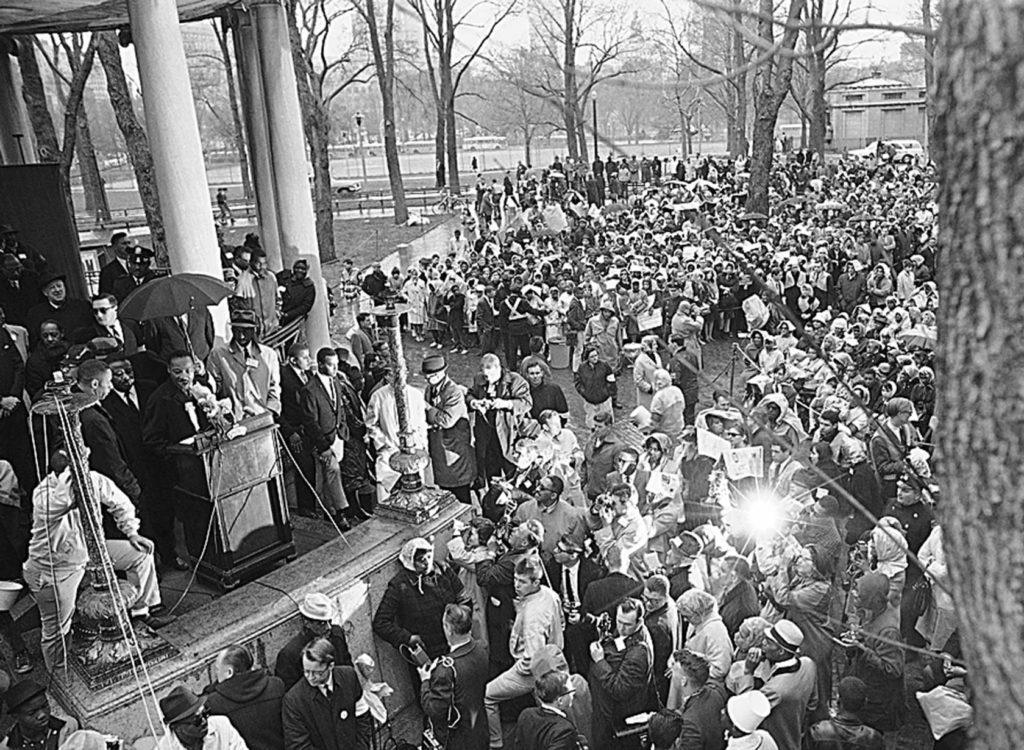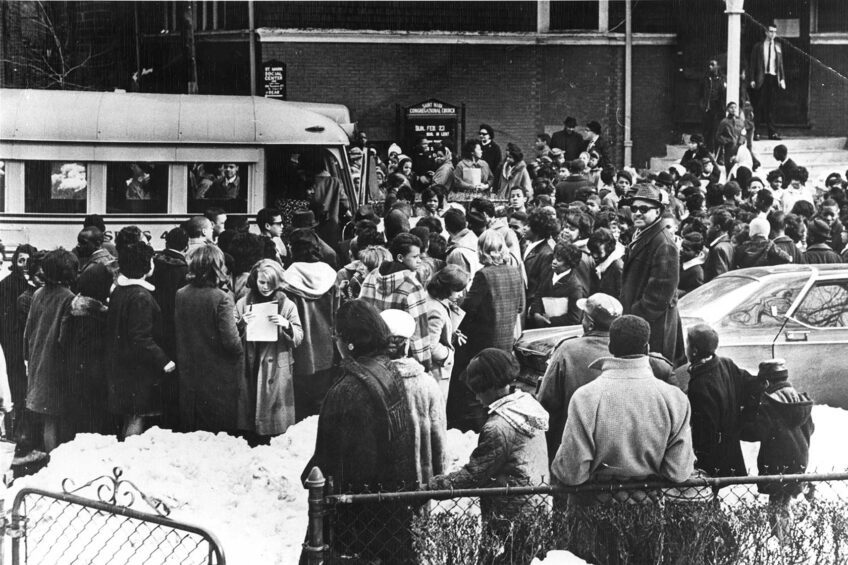
Martin Luther King Jr. touched Boston, and Boston touched him. Being in Boston was an important part of his life, and his presence here during the 1950s and 60s is part of the city’s history.
King first came to Boston in 1951 to study at Boston University’s School of Theology, where he received his Ph.D. in philosophy in 1955.
His first apartment here was at 170 St. Botolph St. in the South End. At the time, the neighborhood was the center of Boston’s Black community, with many railroad porters renting rooms in the area adjacent to the former railyard that is now the site of the Prudential Center.
King next lived at 397 Mass. Ave. with an old friend from Morehouse College in Atlanta. Their apartment became the meeting place for the Philosophical Club, a group of Black students they organized to discuss the issues of the day.
The same year Dr. King arrived in Boston, his future wife Coretta Scott came here to study at the New England Conservatory. Scott initially lived at 1 Chestnut St. on Beacon Hill, at that time the residence of Charlotte Bartol. Scott cleaned and did laundry in exchange for her lodging in the Bartol home.
In early 1952, the two met after an introduction by a mutual friend, Mary Louise Gordon; a romance blossomed, and in June 1953, the pair was married in Heiberger, Alabama, where Scott’s parents lived.
After their wedding, the Kings returned to their studies in Boston and made their new home in a one-bedroom apartment at 396 Northampton St.
At Boston University, King studied philosophy and theology under Edgar S. Brightman and L. Harold DeWolf, two leading advocates of personal idealism. Through this philosophy, King strengthened his idea of a personal God and formed his belief in the dignity and worth of all human personality.
By the winter of 1953, King began thinking about beginning his ministry. He was offered and took a job at Dexter Avenue Baptist Church in Montgomery, Alabama.
In June 1953, Coretta Scott King finished her studies at the Conservatory. The couple closed up their Boston apartment and went South. The rest is history.
The Boston years had sharpened King’s gifts as a religious thinker and leader. And when he was needed, King would come back to this city.
The years 1964-65 saw debate over the de facto segregation in the Boston Public Schools. Black parents called for the closing of the inadequate Boardman School in 1964. That same year, the parents and their supporters boycotted the schools in a protest over segregation and set up the Freedom Schools. Dr. King came to Boston to give support.
He returned in 1965 for a second boycott as the struggle with the School Committee over inadequate and segregated schools continued. King tried to visit the Boardman School but was turned away by school officials. He then organized the famous protest march through Boston, which went from the Carter Playground on Columbus Ave. to the Boston Common.
From the podium before the General Court of Massachusetts, King delivered a stirring message to Massachusetts legislators on the evils of segregated education for all of Boston students.
The state’s Racial Imbalance Act was passed in 1965, and King’s voice and actions were part of that legislative movement.
Today in Boston we have reminders of Martin Luther King Jr., including the newly installed “Embrace” sculpture on the Common, a K-8 school renamed after him, Martin Luther King Boulevard, the Martin Luther King Center at Boston University, and a monument in front of BU’s Marsh Chapel.
Adapted from a 1978 article written by Robert Hayden.






